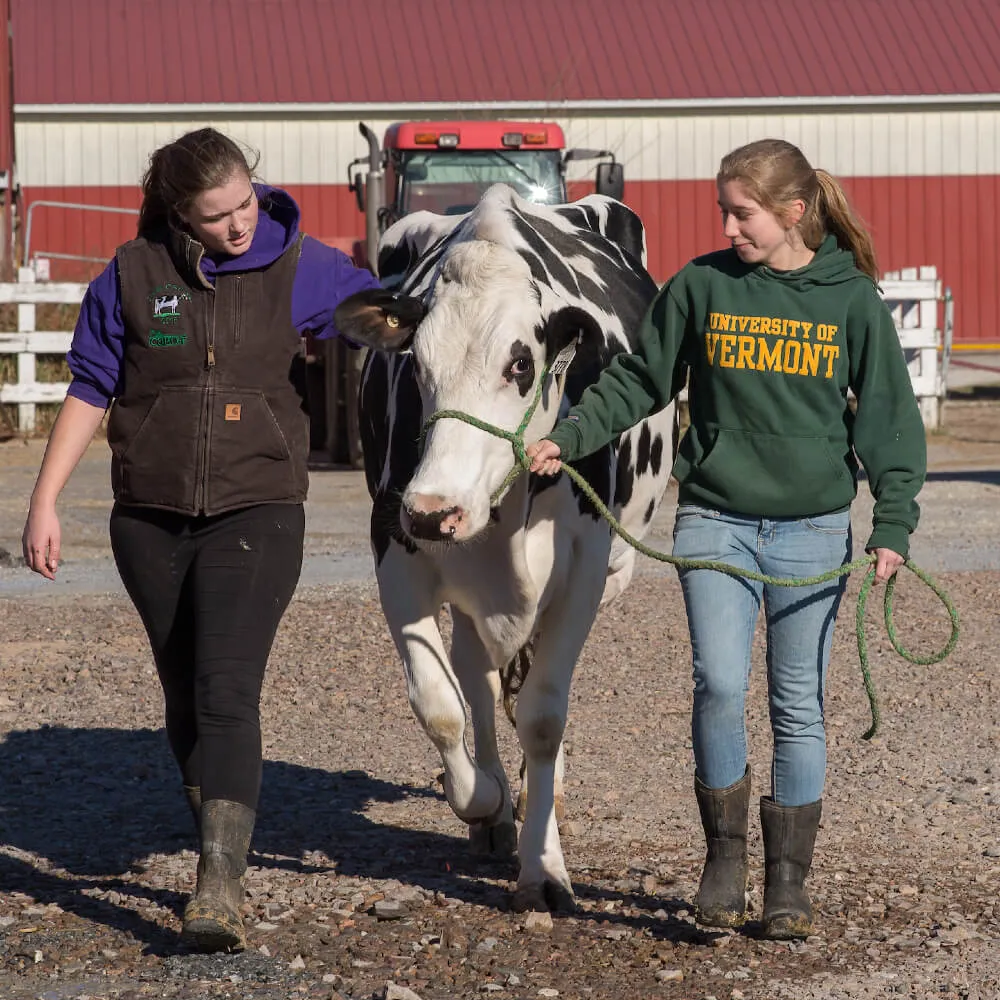Highlights include:
- In 2012, UVM became the fifth signatory school to the Real Food Challenge, supported by student leaders and faculty in the Food Systems spire.
- UVM met its initial goal of 20% Real Food—ingredients certified local, organic, humanely raised, and/or fair trade—in 2017, three years ahead of target. A revised goal of 25% was met in 2019. In 2020, UVM scored the highest STARS points for sustainable dining among public institutions.
- UVM Dining has a partnership with UVM’s Catamount Educational Farm to purchase wholesale produce, grown by the student farmers in the Farmer Training Program, for use in our dining units. Each year, we meet with Catamount Farm staff to develop a crop plan based on our expected needs the following season. Our continued support helps enable the growth of this academic program and strengthens our local food system.
- Since 2015, 100% of the maple syrup served on campus comes from UVM’s own Proctor Maple Research Center, located in Underhill, Vt.
- UVM Dining is verified by the Food Recovery Network as a location that sends surplus food to people and not landfills, by working to divert as much excess edible food. We partner with Rally Cats Cupboard to offer free food pop-ups every Friday afternoon and donate to Feeding Chittenden whenever possible. We donate approximately 10,000-15,000 lbs. of food annually.
- UVM Dining is committed to reducing packaging waste and has had an EcoWare program since 2011. Starting in the fall of 2024, UVM Dining implemented Reuse Pass, a web-based app and technology that will expand access to the program and provide improved reusable container usage data. The program is now free to all students, staff, and faculty! Here's how it works! After signing up, you will have a QR code on your mobile device. When you are ready to check out an EcoWare container, you will scan your ReusePass and the cashier will scan the QR code on the container, "checking out" that container to your account, similar to checking out books at the library. To keep this program running, we do need to ensure that containers are returned in a timely manner. Learn more about how Ecoware works, including insider tips at UVM Dining Sustainability.
- Learn more about Vermont First, UVM Dining’s local food purchasing program and other UVM Dining’s Sustainability Initiatives.
Vermont first: tracking food spending and increasing local purchasing.
In 2014, UVM Dining and Sodexo launched Vermont First, a first-of-its-kind program committing Sodexo to track local food spending and increase local purchasing across its Vermont institutional markets. Since its inception, the aim of Vermont First has been to grow market opportunities for local producers, stimulate job growth, and ensure the viability of Vermont's working lands. We do this through strategic purchasing shifts, collaboration with stakeholders, and increasing consumer awareness. Our definition of "local" is in line with the Vermont state local food definition (PDF), grown or processed in Vermont. In 2020, we began tracking regional food spending, in alignment with the Farm to Institution New England definition (grown or manufactured in New England, plus 50 miles), to support the regional food system.
EcoWare adds convenience, reduces waste.
UVM Dining launched EcoWare in 2011, a program allowing students to carry food out of the dining locations in a reusable container, keeping thousands of disposable containers out of the waste stream each year since!
Future goals
UVM released its Comprehensive Sustainability Plan in Spring 2023. The food and dining goals as part of this plan are: to increase spending on Vermont-grown food to 25% by 2030 from the 2020 baseline; prioritize food purchasing from diverse suppliers where possible (i.e., minority/women-owned); and support access to healthy, local food for the campus community.
